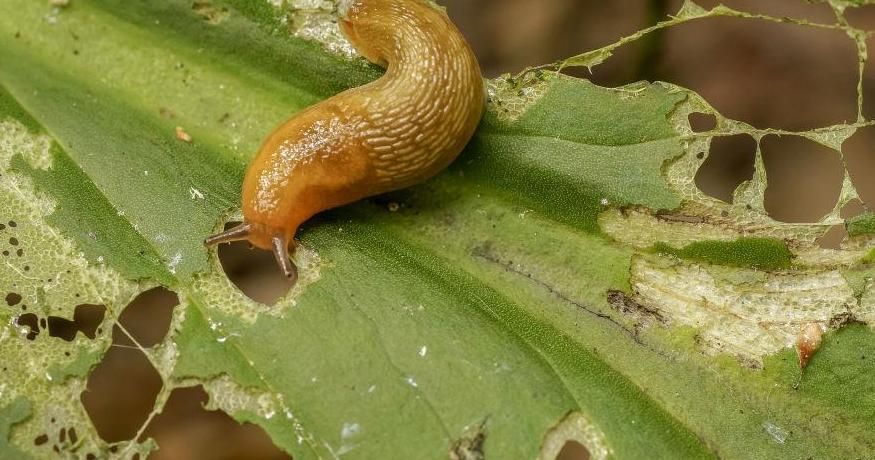10 ways to prevent and get rid snail and slug infestation

The content of this article '10 ways to prevent and get rid snail and slug infestation' was prepared by www.ecoagricultor.com and has been revised and republished by FreshFruitPortal.com.
Snails and slugs can become one of the most voracious infestations we can experience in our garden or organic vegetable garden.
They proliferate easily when conditions are ideal for them, such as humid periods and average temperatures, so we can see them more in spring and autumn, while during cold or very hot weather they will be lethargic.
Snails and slugs usually look for dark, cool, and humid places to shelter, they come out to feed at night and prefer new and tender shoots, although they also attack the roots. That is the reason seedlings and younger plants are usually their main targets.
Adult snails are hermaphrodites (although they cannot self-fertilize) and can lay up to 100 eggs per month.
Prevent slug and snail infestation
- Use drip irrigation: snails and slugs love humidity. If you use drip irrigation the plants will not have the humidity that other types of irrigation cause and the slugs will go to other areas in search of humidity. It is also very useful to water first thing in the morning instead of at night.
- Predators of snails and slugs: their natural enemies will help to keep them under control and prevent their massive proliferation. We could be helped by salamanders, lizards, toads and frogs, centipedes, beetles, snakes, turtles, hedgehogs, ducks, chickens or birds.
- Plants that repel slugs and snails: they avoid plants such as rosemary, lavender, mustard, sage, nasturtium, begonia or even geraniums. It would be good to plant them near the crops most susceptible of being attacked or near the seedlings so that they do not attack them.
- Traps for slugs and snails: to provide shelter and trap them we can put tiles, stones, branches, bowls, or other similar objects where slugs and snails can shelter during the day. This will make it easier to locate them and eliminate them manually.
- Keep an eye on shady and damp places in gardens and vegetable gardens: slugs and snails like to shelter in shady and damp places and choose them to lay their eggs. Keep these kinds of sites under observation during peak activity of these mollusks.

Eliminate snail and slug infestation
- Remove snails and slugs manually: both snails and slugs are large enough to be removed by hand. We should also look at surrounding objects and materials, where they could take refuge.
- Beer for snail and slug infestation: at night, put some beer in small containers half buried in the ground and, in the morning, you will find snails in the containers. You can also impregnate a sack with beer and leave it open, in the morning you will have slugs and snails inside. They love beer. It also works with a mixture of water, sugar, and yeast.
- Barriers to keep snails and slugs out: these mollusks hate copper, so we can surround crops with copper wire or thread during their most active time. Sprinkling ash around the plant bases, bits of eggshell, gravel, sand, sawdust, pinnace or even coffee grounds deter snails and slugs from advancing.
- Soap to eliminate slugs and snails: another ecological option to combat mollusk infestations consist in spraying soap from washing nuts on the crops. They will leave your garden immediately with this solution.
- Orange peels for slugs and snails: spread the orange peels upside down and the snails and slugs will come. You will find them there in the morning and be able to eliminate them.
- Garlic for slugs and snails: prepare a maceration with 4 cloves of crushed garlic per liter of boiling water. Leave it for 12 hours, strain and dilute it with 1 liter of water and spray it on affected crops.

Other ecological solutions for snail and slug infestations
1.- Natural predators of snails and slugs are snakes, toads, birds, turtles or beetles, keep this in mind when looking for ways to avoid or combat infestations.
2.- You could set a trap like lettuce leaves to catch as many snails or slugs as possible.
3.- Avoid overwatering at night, as we have said humidity attracts them. Drip irrigation will be the best way to avoid snail and slug infestations. In addition, this way the irrigation water is maximized.
4.- Due to their size and slow movement, they can be caught one by one by hand without problems.
5.- Other traps to bet set included sugar water, beer and orange, watermelon, melon or potato peels, in tiles or branches with a concave shape, or sprinkle cookie crumbs. Put them in low dishes and always in shady and humid sites.
6.- Stir the soil from time to time, especially in dark and fresh sites, because they will deposit their eggs in those places and thus, we avoid increasing their number.
7.- Salt dehydrates them but be careful where you put it because it could also affect your plants.
8.- Use ashes to prevent the advance of snails and slugs. Spread it around the crops to keep them away.
9.- Crushed shells or eggshells are very effective to prevent the advance of snails and slugs. Put them around your plants.
10.- You can also put a cloth soaked in milk or beer around the plants at night, you will find the snails and slugs in it.
Source: www.ecoagricultor.com









































